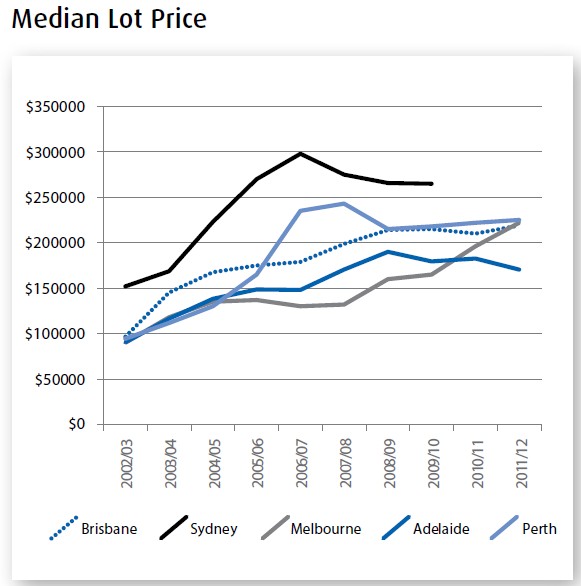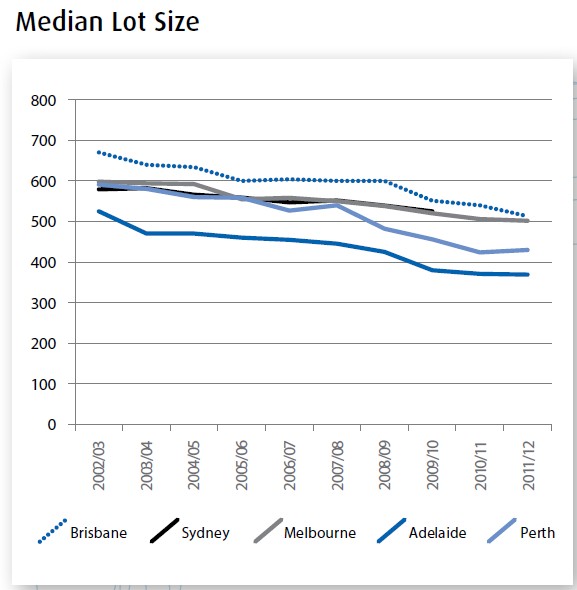
The Urban Development Institute of Australia (UDIA) yesterday released its annual State of the Land Report (below), which provides an assessment of land supply in Australia’s capital cities.
For me, the centrepiece of this year’s report are the below charts showing an ongoing increase in fringe land values in Melbourne, Brisbane and Perth in spite of a continued reduction in lot sizes across all capital cities:


The report states the following regarding the shrinking block sizes:
The median size of lots has been gradually declining as a result of the scant supply and high cost of land. Developers have responded to planning paradigms for increased densities in both infill and greenfield areas and have maximised the number of dwellings in a typical broad acre development…
The smallest lots have been produced in Adelaide with a median lot size of 371m2, the only city with a median lot size under 400m2. Lots in Perth are sized at 430m2 which is smaller than lot sizes in Melbourne and Brisbane (both which have median lot sizes over 500m2). Data for Sydney’s lot sizes is not available for the past two years.
And as noted in Property Observer yesterday:
Research from the National Land Survey Program (NLSP) carried out for the UDIA in November last year found that the average first home buyer is paying on average 30% more for a block of land and getting 36% less land than during the height of the property boom.
The UDIA also calls for the federal government to establish a national strategic plan, requiring cities to maintain a specified rolling supply of development-ready land to meet demand driven by population growth.
It also wants to see “federal funding to be linked to state governments establishing comprehensive land-use plans which are aligned with detailed, costed infrastructure plans and underpinned by delivery time frames”.
Other recommendations include:
- The Productivity Commission to undertake an inquiry into ‘developer levies’, assess the impact of these levies on broader based tax collections and investigate alternative methods of financing infrastructure
- Through the identification of leading practice, State Governments should encourage Local Councils and relevant State Agencies to reform the processes involved in assessing applications for development
- Conduct a thorough bi-annual audit of all Commonwealth-owned land in order to regularly update its Register of Surplus Commonwealth Land
“What is desperately needed is a suite of Government policies which will bring about an accelerated, but more coordinated approach to serviced land release while simultaneously departing from the inequitable first user pays approach to funding infrastructure”, says UDIA National President, Julie Katz.

